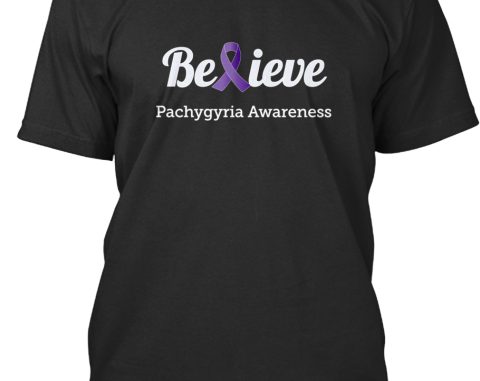
Thank you for contacting GARD. We invite you to visit the following link to view updated general information about pachygyria on our web site.
http://rarediseases.info.nih.gov/gard/7300/pachygyria/case/24499/case-questions
We have also identified additional information resources that you might find helpful. If any of the links we have provided do not work, please copy and paste the entire address into your browser. If you have other technical difficulties with this information, please contact GARDinfo@nih.gov or 888-205-2311 for technical assistance.
What is paracentral pachygyria?
A search of the resources available to us did not identify any information about paracentral pachygyria. It could be that this terminology is no longer in use.
What can you tell me about grade 4 lissencephaly?
Grade 4 lissencephaly refers to diffuse pachygyria that is more severe posteriorly. This type of lissencephaly is very rare.[1] This seems consistent with what you were told back in 2006.
Is there a new grading system or terminology used to classify lissencephaly / pachygyria?
Lissencephaly and pachygyria are neuronal migration disorders. More than 25 syndromes resulting from abnormal neuronal migration have been described.[2]
The current (2014) established classification scheme for lissencephaly is based on the severity (grades 1-6) and the gradient.[1]
Grade 1: generalized agyria
Grade 2: variable degree of agyria
Grade 3: variable degree of pachygyria
Grade 4: generalized pachygyria
Grade 5: mixed pachygyria and subcortical band heterotopia
Grade 6: subcortical band heterotopia alone
Gradient ‘a’: from posterior to anterior gradient
Gradient ‘b’: from anterior to posterior gradient
Additional information about the current classification system can be accessed through the following article. A full-text version of this article is attached.
Pavone L1, Corsello G, Pavone P, Iannetti P. Lissencephalic syndromes: brain and beyond. Front Biosci (Schol Ed). 2010 Jan 1;2:85-95.
Will my son’s children be at-risk to inherit pachygyria? Possible causes
Any risk to your son’s children is dependent upon the cause of his pachygyria. Lissencephaly may be due to various non-genetic and genetic factors. Such factors may include intrauterine infection, insufficient supply of oxygenated blood to the brain (ischemia) during fetal development, alteration or deletion of a specific region on chromosome 17, or autosomal recessive or X-linked inheritance.[3]
Researchers have demonstrated that careful evaluation of brain imaging studies may assist in distinguishing between isolated lissencephaly caused by deletions or mutations of the LIS1 gene (lissencephaly 1) and mutations of the XLIS gene (X-linked lissencephaly).[3]
We recommend that you consult with a genetics professional to discuss the availability of clinical and/or genetic testing for you son. Results of such evaluations/testing may further identify the cause and thus risks for future generations. Genetics clinics are a source of information for individuals and families regarding genetic conditions, treatment, inheritance, and genetic risks to other family members.
More information about genetic consultations is available from Genetics Home Reference at http://ghr.nlm.nih.gov/handbook/consult.
To find a genetics clinic, we recommend that you contact your primary healthcare provider for a referral.
The following online resources can help you find a genetics professional in your community:
The National Society of Genetic Counselors provides a searchable directory of US and international genetic counseling services.
The American College of Medical Genetics has a searchable database of US genetics clinics.
The University of Kansas Medical Center provides a list of US and international genetic centers, clinics, and departments.
The American Society of Human Genetics maintains a database of its members, which includes individuals who live outside of the United States. Visit the link to obtain a list of the geneticists in your country, some of whom may be researchers that do not provide medical care.
Is pachygyria a progressive (degenerative or regressive) condition?
The neurological issues seen in patients with pachygyria are dependent upon the damage found in brain. Seizures may develop over time.[2]
References:
Cardoso C, Leventer RJ, Matsumoto N et al. (2000). ‘The location and type of mutation predict malformation severity in isolated lissencephaly caused by abnormalities within the LIS1 gene’. Hum. Mol. Genet. 9 (20): 3019–3028.
NINDS Neuronal Migration Disorders Information Page. National Institute of Neurological Disorders and Stroke (NINDS). September 30, 2011 Available at: http://www.ninds.nih.gov/disorders/neuronal_migration/neuronal_migration.htm. Accessed 2/21/2014.
Gleeson JG. Lissencephaly. National Organization for Rare Disorders (NORD). 2012 Available at: http://www.rarediseases.org/rare-disease-information/rare-diseases/byID/454/viewAbstract. Accessed 2/21/2014.
Are there any advocacy organizations for individuals and families with pachygyria?
Additional information and supportive resources for pachygyria can be obtained from the following organizations.
Cortical Foundation
PO Box 201302
Austin, TX 78720
Telephone: 512-761-4375
E-mail: info@cortfoundation.org
Website: http://cortfoundation.org
The Lissencephaly Network, Inc (USA)
10408 Bitterroot Court
Fort Wayne, IN 46804
Fax: 260-432-4310
E-mail: lissnet@lissencephaly.org
The Lissencephaly Network, Inc (Canada)
1549 Regent Street
Regina Saskatchewan S4N 1S1
Canada
Telephone: 306-569-0146
Fax: 306-522-1153
How can I learn about research involving pachygyria?
Dr. William Dobyns of the University of Washington and Dr. Joseph Gleeson at the University of California, San Diego have authored many articles related to the topic of lissencephaly. These physicians continue to conduct genetic research on lissencephaly and related brain malformations. The Information Center provides the names of researchers for informational purposes only and not as an endorsement of services.
For more information about the lissencephaly project and related research, contact:
Joseph G. Gleeson, M.D.
University of California, San Diego
E-mail: gleesonlab@ucsd.edu
Web: http://www.cbd.ucsd.edu
William B. Dobyns, M.D
University of Washington
E-mail: wbd@u.washington.edu
Web: http://www.seattlechildrens.org/research/integrative-brain-research/
In addition, the Centers for Mendelian Genomics program is working to discover the causes of rare genetic disorders. For more information about applying to the research study, please visit their website.
Where can I find more information about pachygyria?
Additional information and resources related to pachygyria can be accessed through the GARD web site. Visit the following link to view the page for this topic.
http://rarediseases.info.nih.gov/gard/7300/pachygyria/resources/1
We hope that these links give you a good starting point in your research. We suggest that you regularly revisit the Web sites for new information that may become available in the future. We strongly recommend that you discuss this information with a medical professional. If you have any other concerns, please contact us again.
Sincerely,
Lois Rednal
Information Specialist
The Genetic and Rare Diseases (GARD) Information Center is funded by two parts of the National Institutes of Health (NIH): the National Center for Advancing Translational Sciences Office of Rare Diseases Research (NCATS-ORDR) and the National Human Genome Research Institute (NHGRI). The GARD Information Center provides the public with access to current, reliable, and easy to understand information about rare or genetic diseases in English or Spanish. Information Specialists are available by phone Monday through Friday, 12:00 p.m. to 6:00 p.m. Eastern time (excluding Federal holidays).
PO Box 8126
Gaithersburg, MD 20898-8126
Toll-free: 1-888-205-2311
Telephone: 301-251-4925
TTY: 1-888-205-3223
Fax: 301-251-4911
E-mail: GARDinfo@nih.gov
Web site:
“>http://rarediseases.info.nih.gov/GARD
Important Disclaimer:
The materials provided are for informational or educational purposes only and are not intended as a substitute for professional medical care, advice, diagnosis, or treatment. This material does not represent an endorsement of any specific tests or products by the National Center for Advancing Translational Sciences Office of Rare Diseases Research (NCATS-ORDR) or the National Human Genome Research Institute (NHGRI). We cannot guarantee the accuracy, completeness, timeliness, or usefulness of the opinions, advice, services, or other information. Moreover, we strongly recommend that you seek the advice of your health care provider with any questions regarding your medical care.


